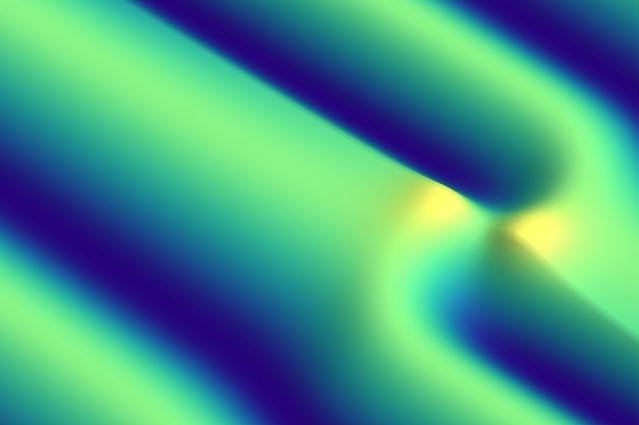Advanced imaging allowed scientists to observe phase changes triggered by laser pulses. Photo by MIT
Oct. 15 (UPI) -- Most phase changes are triggered by temperature. But light can also cause melting of sublimation, and new research suggests light-generated phase changes happen differently.
Scientists have long suspected light melts matter differently than heat, but a new study -- published Monday in the journal Nature Physics -- is the first to confirm and detail the distinction.
To study the novel phase change process, scientists used a charge density wave, an electron density modulation frozen inside a solid. The electronic analog mimics the behavior and structure of a crystalline solid.
Under normal conditions, a crystalline solid melts gradually and uniformly when heated. When scientists induced a phase change of the charge density wave using rapid laser pulses, they observed a multitude of singularities called topological defects.
The defects alter the dynamics of the surrounding matter's electrons and lattice atoms. According to the authors of the new study, the singularities recall tiny vortices, like eddies in water.
Light-induced phase changes occur rapidly. Scientists have previously observed similarly rapid phase changes when semi-molten red-hot iron is plunged into cold water, a process called quenching.
A combination of advanced imaging techniques allowed scientists to precisely measure how the matter and charge density wave responded to each laser pulse.
"We can watch, and make a movie of, the electrons and the atoms as the charge density wave is melting," Nuh Gedik, a professor of physics at the Massachusetts Institute of Technology, said in a news release.
The high-definition images revealed the formation and propagation of vortex-like topological defects during the phase change. Scientists were also able to observe the matter solidifying once the laser pulses ceased.
Just as the light-induced phase change happens rapidly and variably, the solidification process progressed differently across multiple timescales.
In the future, scientists hope to engineer or manipulate the phase change process. The mechanism could be used to power new types of optoelectronic devices, such as a data storage device.
"[We could use] these light pulses to write defects into the system, and then another pulse to erase them," said graduate student Alfred Zong.















